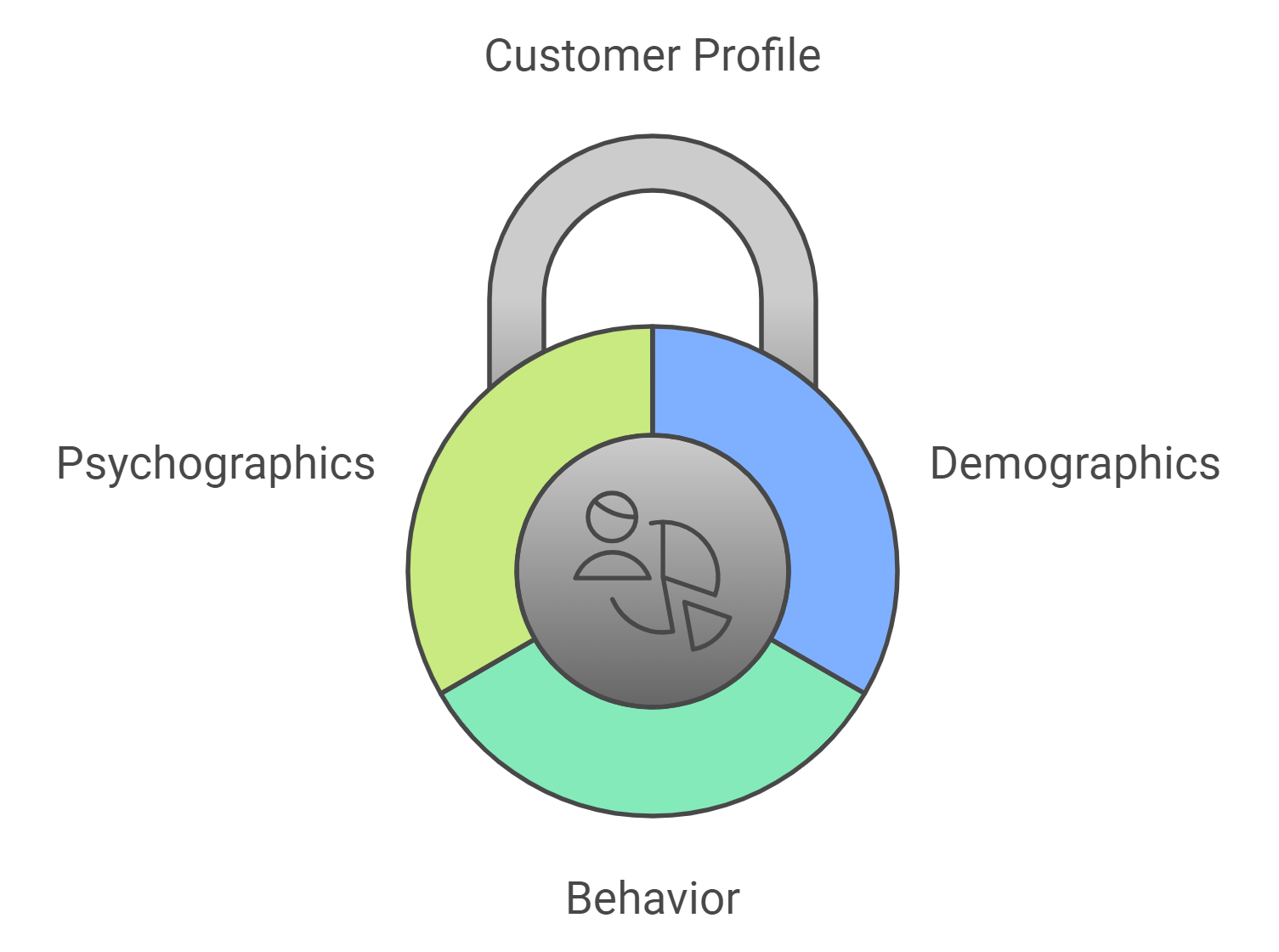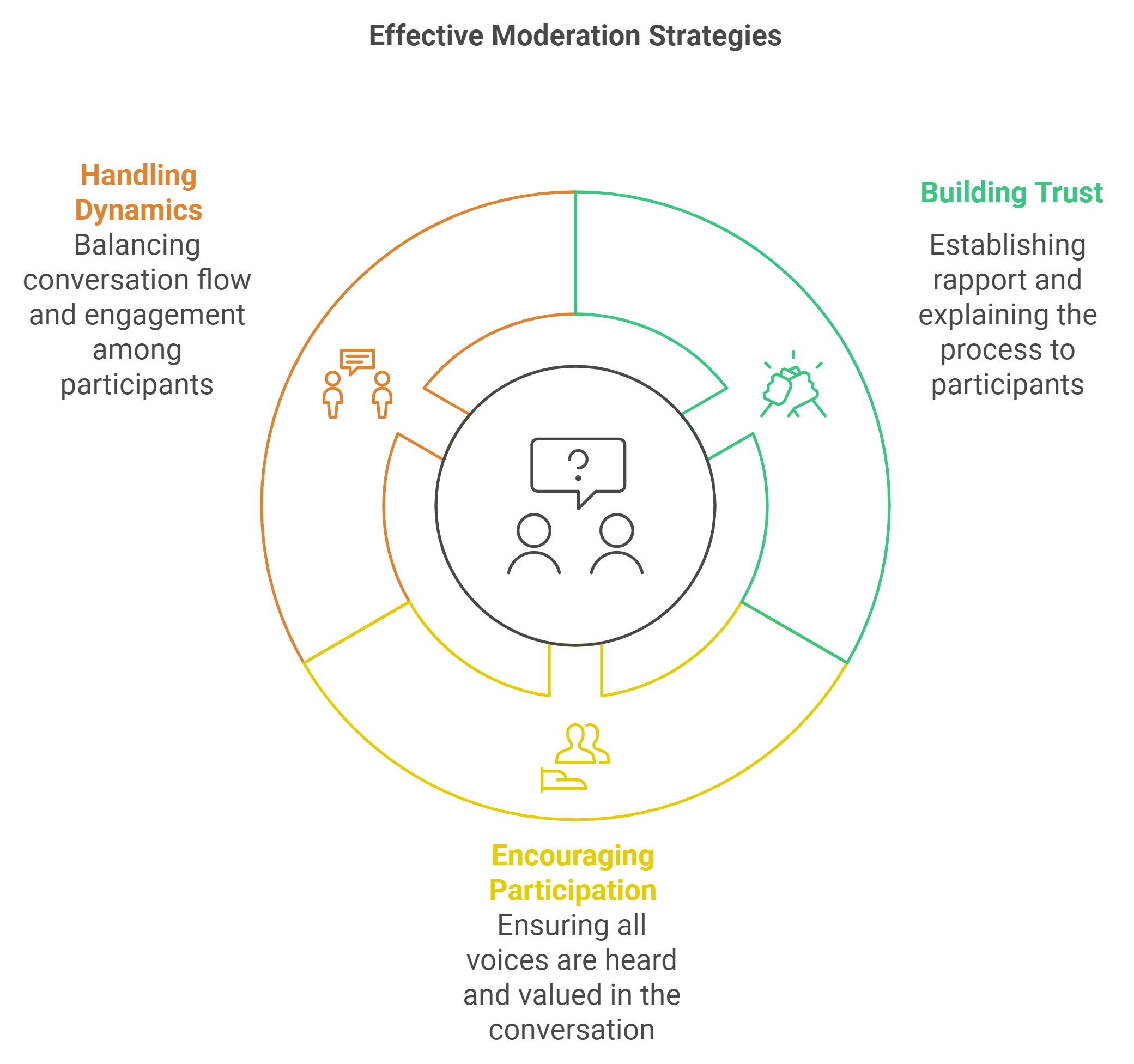如何进行焦点小组讨论

简单地说,焦点小组通常由6到12个具有相似人口统计数据的人(例如,购车者,糖尿病患者,新妈妈)组成,他们聚集在一起讨论一个“重点”话题。
您是否曾想过如何直接从目标受众那里获取可付诸行动的见解?在 SIS International,我们亲眼目睹了焦点小组如何成为理解消费者行为背后的真实情感和动机的颠覆性力量。
作为一名首席执行官,我有幸与三星、强生和卡夫亨氏等全球主要品牌合作,我可以告诉你,组织一个结构合理的焦点小组往往能带来深刻而有意义的见解。我们为 SIS International 的许多行业(从医疗保健到消费品)的客户组织了焦点小组,我们亲身了解到他们如何揭示出可行的见解,否则这些见解就会被搁置。
那么...焦点小组是什么?
讨论由受过培训的主持人主持,主持人会遵循指南以确保提出有关产品或服务的某些问题。这种定性技术的关键是参与者之间的开放对话和动态互动。
在许多情况下,会向小组展示实物、产品原型或概念。然后讨论潜在的功能、优势或属性、营销信息或广告,或拟议网站的模型。投影仪、挂图和白板也可用于刺激小组反应。
焦点小组通常持续 1-2 小时,通常为 90 分钟左右。但是,由于参与者人数通常为 8-10 人,因此通常会在不同地点进行多个此类小组讨论,以收集最广泛的想法和反馈。
为什么企业需要知道如何开展焦点小组?
“通过开放式讨论,您可以发现客户可能尚未完全意识到的情感触发因素、动机甚至挑战。”
在 SIS International,我们与不同领域的企业都有合作——从通用电气等跨国巨头到打入新兴市场的尖端初创公司。显然,在客户洞察和数据驱动决策方面,那些一开始就知道如何开展焦点小组的企业会占据优势。
我们需要适应,因为技术发展迅速,消费者的需求和行为也在迅速变化。这些趋势将继续演变,焦点小组将通过提供有关新产品或新营销角度的见解,为企业提供所需的敏捷性,让他们成为行业领先者。
如果不了解这一点,公司就有可能根据不完整或不准确的信息采取行动。正如我在 SIS International 的工作所表明的那样,焦点小组的作用不仅仅是提供反馈,它们还揭示了消费者行为、动机和偏好的基础。以下是我们通常向客户强调的一些优势:
- 丰富的定性见解:焦点小组比传统调查能够提供更详细的答复。
- 发现隐藏的需求和顾虑:参与者经常表达他们之前可能没有表达过的想法或担忧。
- 实时反馈:焦点小组提供直接的、可操作的见解。
- 测试想法和概念:焦点小组是在创意和概念进入市场之前对其进行评估的最佳环境。
- 增强客户关系:通过焦点小组直接与消费者接触,企业可以建立更牢固的关系和信任。
- 明智的决策:焦点小组为企业提供了一种在产品开发、营销策略和客户参与工作方面做出更明智决策的方法。
何时使用焦点小组

每种市场研究方法都有其优点,讨论小组也不例外。以下只是焦点小组的一些独特之处。
- 有时“是/否”或多项选择题的答案不足以了解消费者的行为或态度。在这种情况下,可以使用定性方法来提出开放式问题,这不仅有助于确认项目假设,还能产生意想不到的创新答案。
- 几乎总是有一间供客户观看的房间,让他们能够亲眼目睹并在双向镜子后面不引人注意地记录事件。从后面的(观看)房间,他们可以立即提交临时问题并向主持人提供任何必要的澄清。
焦点小组的演变
在过去的几年中,传统面对面焦点小组的变体已经出现。
- 在在线版本中,主持人可以提出问题和视觉刺激,然后快速来回发送答案和输入。没有现场对话。
- 另一种方法是使用网络摄像头,这样几个人(通常不超过 8 个人)的面孔就可以在计算机屏幕上同时看到对方,从而更紧密地模拟面对面的互动。
- 这些技术允许焦点小组不受地理或时区限制,如果特定区域内的招募者人数太少,这将非常有用。它们还可以省去设施租赁、差旅和茶点费用。
为焦点小组选择合适的参与者
选择合适的参与者是组织成功焦点小组的第一步。这确保他们 代表你的目标市场在 SIS International,我们的团队与客户密切合作,以确定符合特定条件的参与者 人口统计、行为和心理特征。例如,如果客户正在测试一款新的奢侈品,我们会关注那些不仅符合正确收入水平而且表现出与奢侈品消费相一致的态度和行为的个人。
选择参与者时,请考虑以下因素:

- 人口统计:年龄、性别、收入水平、教育程度和所在地。
- 行为:与您的产品相符的过去的购买行为、使用习惯或特定兴趣。
- 心理统计学:性格特征、价值观和生活方式偏好可能会影响他们的反应。
这种定制方法有助于确保您收集的反馈是相关的,并且可以直接应用于您的业务战略。
筛选流程
使用筛选调查或访谈对于评估潜在参与者是否符合必要标准至关重要。但是,进行筛选问卷将有助于仅选择与研究目标最相关的人。例如,询问他们是否有类似产品的经验、偏好、态度是否符合您的研究目标。
设计有效的焦点小组问题

焦点小组的成功很大程度上取决于问题的结构。目标是鼓励 开放式讨论 提供深刻见解。设计问题时,避免问是非问题,而是问一些促使参与者详细阐述自己的想法和感受的问题。
构建有效焦点小组问题的一些最佳实践包括:
- 使用开放式问题:例如,不要问“您喜欢这个产品吗?”,而要问“您最喜欢这个产品的什么地方?”
- 提出后续问题:诸如“你能解释一下为什么吗?”或“那让你感觉如何?”之类的问题鼓励参与者更深入地思考他们的回答。
- 改变问题类型:首先从一般性、宽泛的问题开始,让小组热身,然后再转向更具体、更有针对性的问题。
避免偏见
作为主持人,我们必须保持中立,以透明的方式传达信息,以便从参与者那里获得真实的反馈。正式偏见也存在,例如提出诱导性问题。例如,不要问“你有多喜欢这个新功能?”,而要问“你觉得这个新功能怎么样?”
以下是避免偏见的几种策略:
- 使用中性语言:确保问题的表述方式公正。
- 不要影响答案:作为主持人,至关重要的是不要将对话引向任何特定方向。您的角色是促进讨论,而不是指挥讨论。
主持焦点小组
焦点小组的成功在很大程度上取决于 主持人的能力 促进对话而不影响参与者。在 SIS International,我们培训了主持人,让他们以让参与者感到舒适、被倾听并能够自由表达自己想法的方式引导讨论。
主持人的主要职责包括:
- 保持讨论的正常进行:虽然允许参与者自由发言很重要,但主持人必须确保对话与研究目标相关。
- 鼓励参与:所有成员都有机会发表意见,这一点至关重要。经验丰富的主持人会引导沉默寡言的参与者,并确保他们的声音被听到。
主持人还应该 中立且富有同情心营造一种让参与者感到舒适并分享真实感受和经历的氛围。
创造包容的环境
参与者必须感到自己的意见受到重视,并且可以畅所欲言而不必担心受到评判。在 SIS,我们专注于:

- 建立信任:首先与参与者建立融洽的关系,介绍自己,并解释过程。
- 鼓励平等参与:有时,占主导地位的参与者可能会主导对话。优秀的主持人会巧妙地转移话题,确保每个人都参与其中。
- 处理群体动态:在让对话流畅进行和确保所有参与者保持参与之间保持平衡非常重要。
分析焦点小组数据
焦点小组会议结束后,需要收集数据 转录和编码。转录是将音频或视频记录转换为文本格式的过程,而编码则涉及将数据分类为有意义的主题。
编码过程包括:
- 确定关键主题:我们将相似的反应分组在一起,以识别模式或重复的想法。
- 数据分类:根据研究目标,我们对反应进行分类(例如,积极反馈与消极反馈、情绪化反应与理性反应)。
提取可操作的见解
一旦数据被转录和编码,下一步就是对其进行分析 提取可操作的见解。这就是焦点小组的真正价值所在。在 SIS,我们的专家团队会审查数据,寻找与客户业务需求相关的关键模式和见解。我们寻找:
- 新兴趋势:参与者表达了哪些新的偏好、行为或挑战?
- 客户痛点:是否存在一些常见的投诉或需要解决的问题?
- 机会领域:根据反馈,公司还有哪些地方可以改进或创新?
最后,我们向客户提供一份详细的报告,其中不仅包括原始数据,还包括 可行的建议 可以直接指导营销策略、产品改进或客户参与工作。
焦点小组的成本和其他权衡

招募是开展焦点小组的最重要和最困难的步骤之一。联系并吸引合适的人选是一项艰巨而耗时的工作。仔细筛选问题可以提高受邀者真正“合格”而不是“专业人士”的可能性。
足够的报酬(现金总是最好的)是确保出席和合作的强大诱因,但会增加研究费用。聘请和会见经过培训的主持人/主持人将影响时间和预算。但是,聘请经过培训、能够倾听、消化并提供客观分析结果的人员的经验是合理的花费。此外,主持人通常会负责招聘和租用设施,并监督会议的视频和音频录制。
必须考虑内部员工和主持人的差旅、住宿、餐饮和相关费用。因此,只有在没有其他方法可以满足研究目标时,才应选择焦点小组方法。
常见问题解答:如何开展焦点小组讨论
1. 什么是焦点小组?为什么它很重要?
焦点小组是一种定性研究方法,其中一小群人讨论他们对特定产品、服务或概念的看法、经验和看法。它很有价值,因为它使企业能够获得定量数据(例如调查)无法提供的深刻见解。
2. 如何为焦点小组选择合适的参与者?
要选择合适的参与者,首先要定义你的 目标受众 基于 人口统计 (年龄、性别、收入), 行为 (过去的购买习惯、使用模式)以及 心理统计 (价值观、生活方式)。筛选问卷或访谈有助于确保参与者符合您的研究目标。这可确保您收到的反馈与您的业务目标相关且有价值。
3. 我应该如何准备焦点小组的问题?
成功焦点小组的关键在于询问 开放式问题 促使详细回答。避免使用是/否问题,而是通过询问参与者的感受、经历和意见来收集定性数据。确保问题 中性的 以避免偏见。例如,不要问“您觉得这款产品的新功能怎么样?”,而是问“您对这个新功能有什么看法?”
4. 主持人的职责是什么?
主持人负责引导对话,同时确保所有参与者都有机会发言。他们应该 中性的确保讨论不偏离主题,不影响回复。熟练的主持人会创建一个 包容舒适的环境 参与者可以自由地分享他们的真实意见,即使他们犹豫不决或不同意他人的意见。
5. 如何分析焦点小组数据?
焦点小组讨论后转录和编码数据。转录是将录制的对话转换为书面文本的过程,而编码则涉及将响应分类为主题。对数据进行分类后,下一步是制定可行的见解 — 趋势、痛点和可能的改进。在 SIS,我们确保这些见解与您的业务目标直接一致,并带来可行的建议。
6. 焦点小组会议通常持续多长时间?
焦点小组会议通常持续 60至90分钟。这段时间足以让参与者深入讨论主题而不会感到疲劳。会议时长可能因研究范围或所涵盖的主题数量而异,但重要的是保持会议的吸引力和富有成效。
7. 焦点小组应该有多少名参与者?
焦点小组通常包括 6 至 12 名参与者。这个规模非常理想,因为规模小到足以让每个人都做出贡献,但又大到足以产生不同的观点。如果小组太小,你可能无法收集广泛的意见;如果小组太大,可能很难管理和确保每个人都参与。
8. 焦点小组可以在线进行吗?
是的!在线焦点小组已经变得很普遍,而且在我们今天生活的世界中更为重要。虚拟会议可以通过视频会议进行,这使得来自不同地理位置的参与者能够参与讨论。使用精心准备的技术进行适当的引导,在线焦点小组可以像面对面的小组一样有效地工作。
9. 哪些类型的企业能从焦点小组中受益?
焦点小组对各行各业的企业都有用,包括 消费品, 技术, 卫生保健, 和 娱乐。它们对于推出新产品、进入新市场或测试营销策略的公司尤其有益。在 SIS International,我们与以下客户合作过 耐克, 联合利华, 和 强生公司,帮助他们了解消费者的看法并改进他们的产品或信息。
10. 如何确保焦点小组反馈的可靠性?
为了获得有效的反馈,营造一个舒适、不带偏见的环境至关重要,让参与者感到他们的反馈受到重视。不要主导对话,不要偏袒任何一方。此外,仔细选择对研究有意义的参与者并进行有效筛选可以确保反馈既相关又可靠。
是什么让 SIS International 成为顶级焦点小组公司?
在 SIS 国际,40 多年来,我们一直在市场研究领域处于领先地位,帮助一些全球最具代表性的品牌更深入地了解其客户。多年来,我们进行了无数次焦点小组调查,并磨练出一套方法,能够持续为我们的客户提供切实可行的见解。
中心位置和全球影响力:
我们的总部位于纽约的中心地带,地理位置优越,让我们能够轻松服务北美和国际市场。我们的中心位置意味着我们可以高效地组织全球主要城市的焦点小组,帮助全球品牌与不同地区的不同消费者群体保持联系。
价格实惠,品质不打折扣:
我们相信,各种规模的企业都应该能够获得高质量的研究。我们经济高效的解决方案可确保您的投资获得最佳价值,使我们成为许多全球企业值得信赖的合作伙伴。
经过验证的专业知识和经验:
凭借四十多年的市场研究经验,我们不断改进焦点小组方法,以确保获得最准确、最有见地的结果。我们有幸与以下顶级品牌合作: 辉瑞, 卡夫亨氏, 和 强生公司,帮助他们根据我们由专家主持的焦点小组收集到的宝贵反馈做出关键的业务决策。
为每个客户量身定制解决方案:
什么设置 SIS 与众不同之处在于我们能够调整焦点小组研究以满足每个客户的特定需求。我们不相信一刀切的解决方案,我们的团队确保焦点小组能够根据项目的确切目标进行量身定制。
全球市场洞察专业知识:
我们为自己不仅能够收集来自客户的反馈,还能收集跨越文化、地区和人口界限的见解而感到自豪。
我们的设施位于纽约市
纽约州纽约市东22街11号2楼 10010 电话:+1(212) 505-6805
关于 SIS 国际
SIS 国际 提供定量、定性和战略研究。我们提供决策所需的数据、工具、战略、报告和见解。我们还进行访谈、调查、焦点小组和其他市场研究方法和途径。 联系我们 为您的下一个市场研究项目提供帮助。



